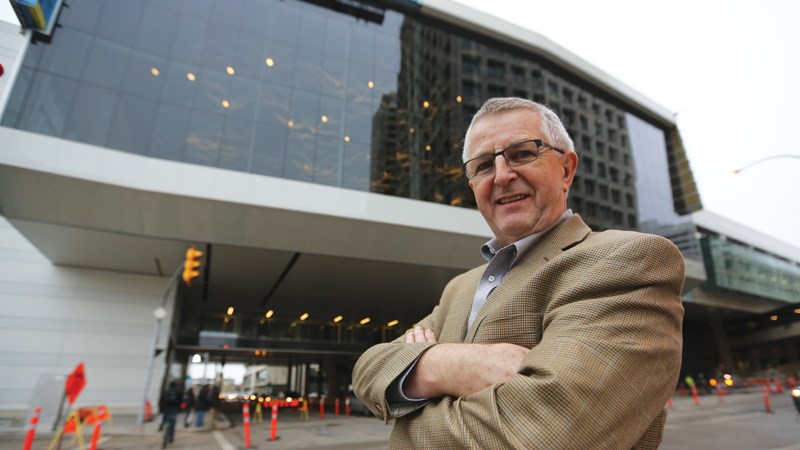There’s a new sheriff in town and she’s not wasting any time putting her mark on Winnipeg.
Dayna Spiring took on the role of president and CEO of Economic Development Winnipeg (EDW) a few months ago and it’s safe to say the organization – and perhaps the city – will never be the same.
For starters, she is merging the operations of EDW, Tourism Winnipeg and Yes! Winnipeg to improve the efficiencies of all three. (The latter organization focuses on convincing existing companies to expand their local footprints. and selling the merits of the city to others looking to relocate their headquarters.)
“Traditionally they’ve been three separate silos and they haven’t been taking advantage of the team here,” she said.
But whether Spiring will be able to reach her goal of Winnipeg developing one of the top-performing city economies in North America remains to be seen.
John McCallum, a finance professor at the I.H. Asper School of Business at the University of Manitoba, said you’ve got to have multiple sectors, such as aerospace, manufacturing, financial services, telecommunications and construction firing at the same time to move the GDP (gross domestic product) needle.
Furthering the challenge is both the city and province are heavily dependant on public sector job creation and federal transfer payments while simultaneously being saddled with high provincial taxes and a growing deficit and debt.
“Winnipeg will be held back from optimum growth by restraint that is coming at both the city and provincial levels,” he said.
McCallum expects Winnipeg’s economy to “bump along” at around 2 per cent GDP growth but there’s room for improvement if private sector job growth finds another gear.
Retail rebound
There is good news on the real estate front, however.
Analysts believe the 18-month slump in the city’s retail sector is coming to an end. A flurry of national store closings and downsizings – highlighted by the departure of Target Canada and Future Shop in the spring of 2015 – drove the vacancy rate up to 5.8 per cent, its highest level since 2000. That’s expected to dip in the latter half of this year as a number of new players open and mainstays expand.
Demand for residential rentals, particularly downtown and in the Exchange District, is high.
Less than nine months after the Bag Factory Apartments welcomed its first tenant, all but one of the 88 one- and two-bedroom units are occupied. More established properties are also maintaining their popularity.
Wes Schollenberg, managing director of Avison Young in Winnipeg, believes business optimism has increased in the city since Brian Pallister and the Progressive Conservatives ousted Greg Selinger’s NDP in the spring provincial election.
Schollenberg said there are more cranes across the city’s skyline than he’s seen in 30 years in the business.
U.S. effect
There isn’t the same kind of demand on the industrial side, but the sector continues to chug along with strong demand for owner-occupied buildings.
“If you need 50,000 square feet and the building remotely fits [your needs], you’ll grab it and pay a premium rather than build something new,” Schollenberg said.
Winnipeg’s economy also stands to benefit if the U.S. economy kicks into high gear because of its aerospace, grain and manufacturing operations. A much larger proportion of goods are shipped south of the border with the loonie hovering below the 80-cent US mark than when it was near parity with the U.S. dollar.
The GDP figures will inch up even further if Klaus Lahr’s vision comes to fruition. The president and CEO of the RBC Winnipeg Convention Centre believes the just-completed $182-million expansion of his facility, which added 258,000 additional square feet of space to make it the fourth-largest of its kind in Canada, believes his team will be able to attract many more thousands of delegates.
“We’ve only been open since March 1 and we’re already $3 million ahead of revenue from last year. Prior to the expansion, we were a $15 million operation annually. We see us growing to become a $25 million to $28 million operation within eight years.”



